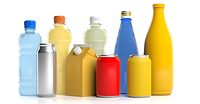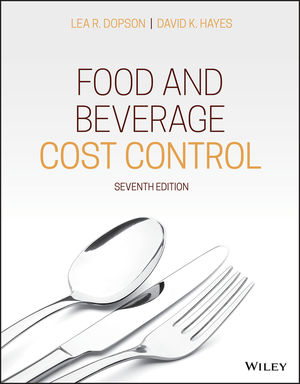The Best Beverage Packages of 2023
Beverage-makers captivate consumers with sustainable, nostalgic packaging

Earlier this year, data from Trivium Packaging in its “2023 Buying Green Report” showed that products with sustainable packaging continue to be a priority for consumers, who are becoming ever-increasingly more environmentally minded.
The report, released in celebration of Earth Day (April 22), mentioned that, despite rising prices due to inflation, consumers still are willing to pay more for products in sustainable packaging.
“The data in this year’s Buying Green Report presents a strong case that transitioning to sustainable packaging is not only the right decision for the environment, but also the right decision for the business,” said Michael Mapes, Trivium CEO, in a statement. “It’s clear that consumers are paving the way for a sustainable future, and businesses need to listen — external factors like the economy don’t phase the eco-conscious demand. Buys are looking at the big picture: the survival of our planet. Consumers are turning away from harmful packaging and turning toward sustainable, recyclable options like metal packaging.”
Based on a survey of more than 9,000 consumers across North and South America and Europe, the report explored the values and behaviors of participants in relation to sustainable packaging.
Some key takeaways from Trivium’s report:
- 82% of consumers across age demographics showed a willingness to pay for more sustainable packaging, up 4 points from 2022 and up 8 points since 2021.
- 90% of Gen Z consumers showed a willingness to pay more for sustainable packaging.
- 71% of consumers have chosen a product in the past six months based on its sustainability credentials.
- 80% of consumers said they would be interested in buying products that come in refillable packaging to reduce their environmental impact.
Trivium’s report highlights reasons why beverage companies should lean into sustainability trends. Not only does eco-friendliness benefit the planet and appeal to consumers, but it also helps business.
In Beverage Industry’s annual Best Packages of Year feature, sustainability in one of the trends driving packaging innovations; however, beverage-makers also are showing how novelty can make a product stand out.
Angry Orchard

The Boston Beer Co.’s Angry Orchard kicked off the Halloween season with a package inspired by the nostalgia of trick-or-treating.
In September, Angry Orchard released Crisp Apple King Size, a giant bottle of hard cider. With 6 liters of hard cider, the limited-edition King Size bottle was more than 16 times the size of a standard bottle of Crisp Apple. Retailing for $200, the King Size bottle maintained the traditional 7% ABV and was available to ship directly to consumers, while supplies lasted.
Joe Gaynor, cider maker at Walden, N.Y.-based Angry Orchard Cider House, says that Halloween is one of the company’s favorite holidays.
“Growing up, we knew that cool house that handed out King Size candy bars to trick-or-treaters — but now, what about us adults?” he asks. “So, we created our first-ever, limited-edition, extra-large, 6-liter Crisp Apple King Size bottle as a nostalgic way for adults to get in on the Halloween fun, share with friends and family and relive the King Size excitement of childhood.”
As for consumer response to the King Size packaging, Gaynor says that the response was positive.
“Our drinkers love limited-edition and novelty packages, and this release is no different,” he states. “It gives fans of the brand a new experience and allows us to continuously innovate and expand our portfolio, delivering new flavor varieties and access to flavors sold exclusively at our Cider House.”
Image courtesy of Angry Orchard
Chareau

Aloe-liqueur brand Chareau, Camarillo, Calif., launched a new packaging design earlier this year, lining up with its 10th anniversary. The design is a new take on a glass bottle, with a slimmer, lighter and more ergonomic shape. The company says the glass bottle is 33% lighter in weight.
“When the time came to update the Chareau packaging for our 10-year anniversary, we looked at the functional, sustainable and aesthetic attributes of the current bottle that we could improve upon,” says Kurt Charron, founder and CEO of Chareau. “We wanted to add to the offerings already in the market, while taking steps toward bringing ingredient transparency and sustainability to the forefront of conversations. Consumers and bartenders can now enjoy the same award-winning, delicious spirit in an even more beautiful and eco-friendly vessel.”
The main benefits of the updated glass bottle are sustainability, ergonomics, consumer messaging and premium. The company wanted to showcase on the bottle that the product was made from locally sourced and plant-based ingredients. A QR code also was added onto the bottle to give consumers an idea of how to best enjoy Chareau.
The company also says that the upgraded packaging reflects the quality in the bottle, while sticking to the message of sustainability and simplicity. Response has been “tremendously positive” from consumers, retailers and distributors alike, it adds.
Image courtesy of Chareau
Crate

New South Wales, Australia-based Fourth Wave Wines took a new approach in sustainable packaging when it launched its label-less wine called Crate. The packaging was designed by Denomination, a group of sustainable drinks branding specialists.
A high-quality, barrel matured wine, Crate is produced from some of Australia’s best red wine regions with a sustainable footprint, the company notes. The wine’s design uses only the necessary packaging components, doing away with unsustainable branding materials, it says.
“Fourth Wave Wines is constantly striving toward greater sustainability and, with the launch of Crate, is shining a light on alternatives to conventional packaging that use paper labels, an increasingly precious commodity,” said Nicholas Crampton, Fourth Wave Wines co-owner, in a statement. “We enlisted the team at Denomination because they always put sustainability at the heart of everything they do. What they have created is a design that allows the quality of the wine to shine, while stripping away unnecessary waste from the packaging. There’s no label printing, no adhesives, no paper usage and less energy used on the bottling line with the removal of the label component.”
The tiny space of a capsule holds all the essential brand information for Crate, containing mandatory information, brand logotype, varietal, region, vintage, legal claims, barcode, brand messaging and a QR code for more information. The packaging uses typography to give the illusion of space.
Image courtesy of Fourth Wave Wines
Looking for a reprint of this article?
From high-res PDFs to custom plaques, order your copy today!








